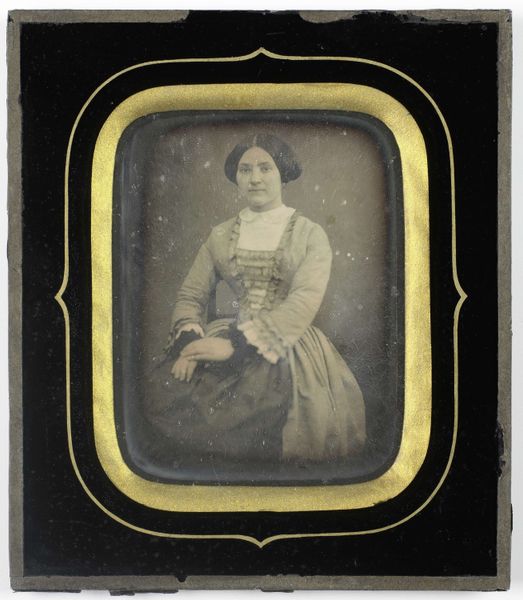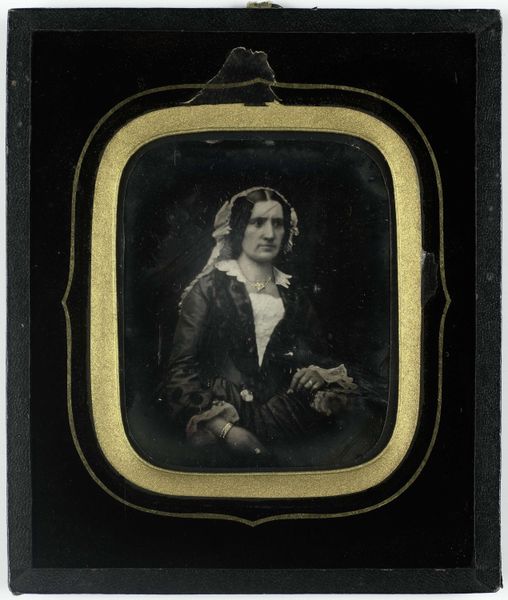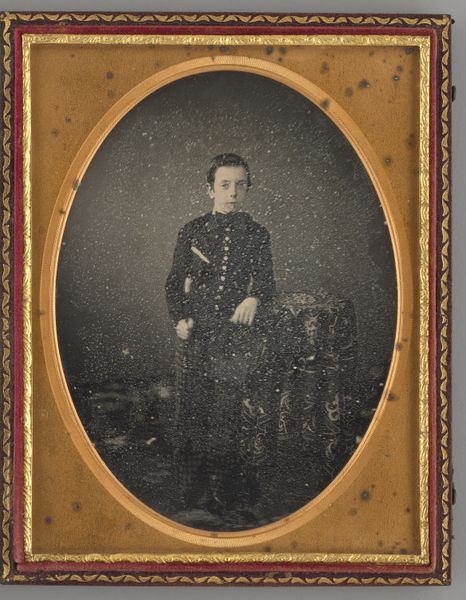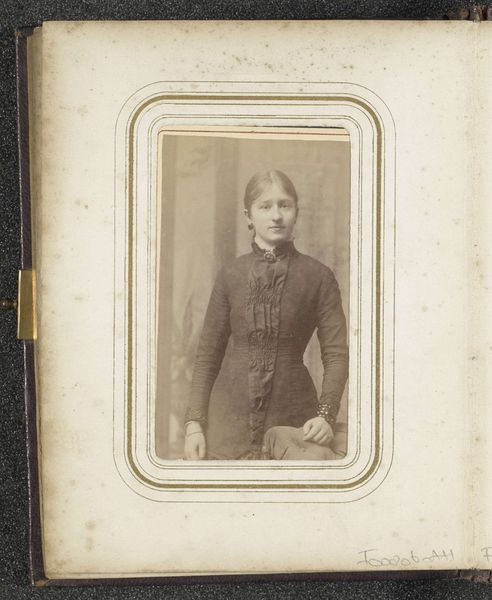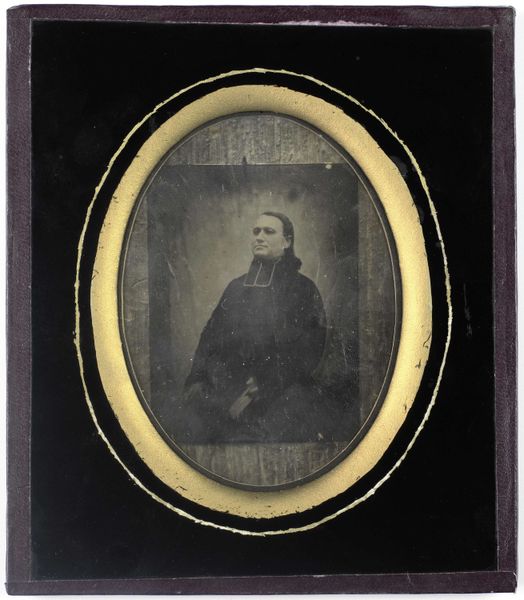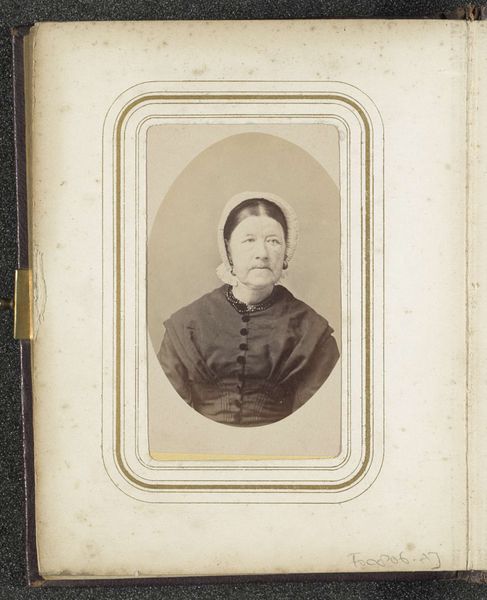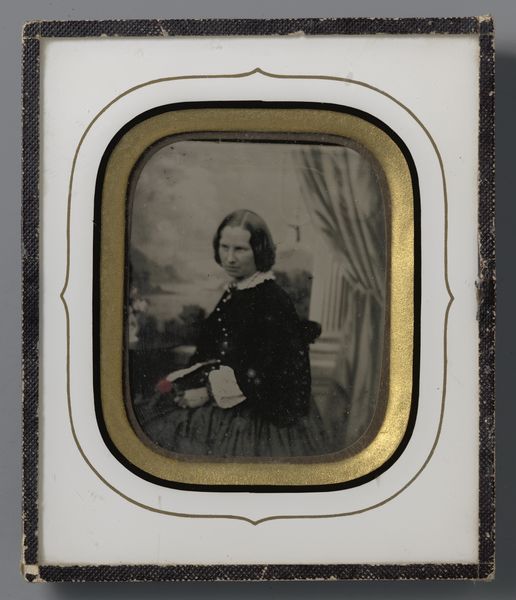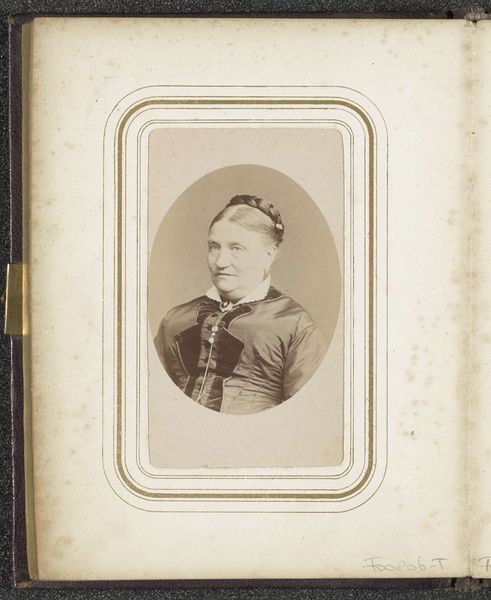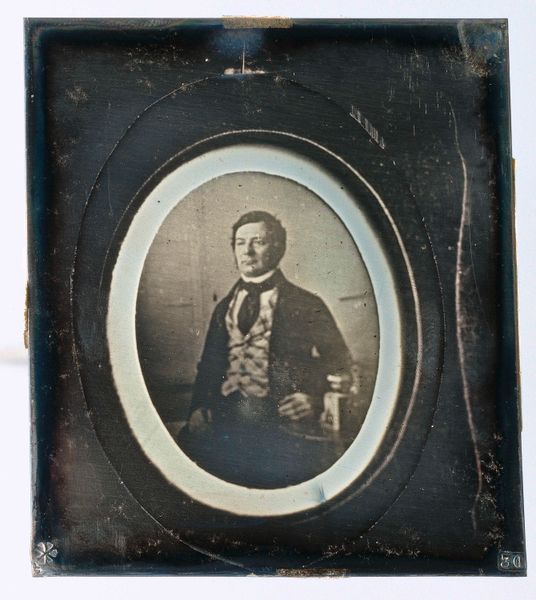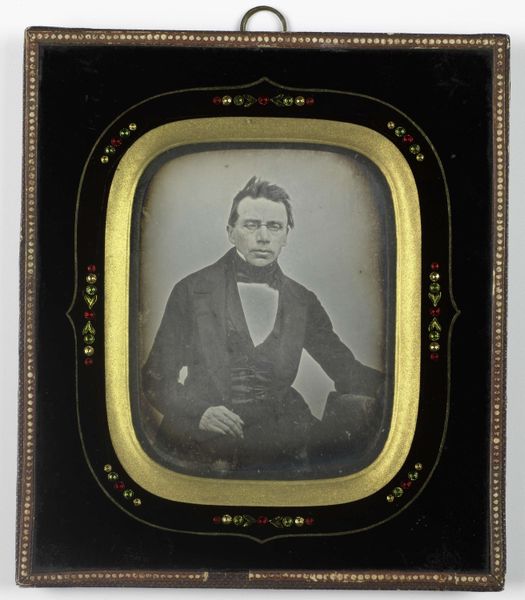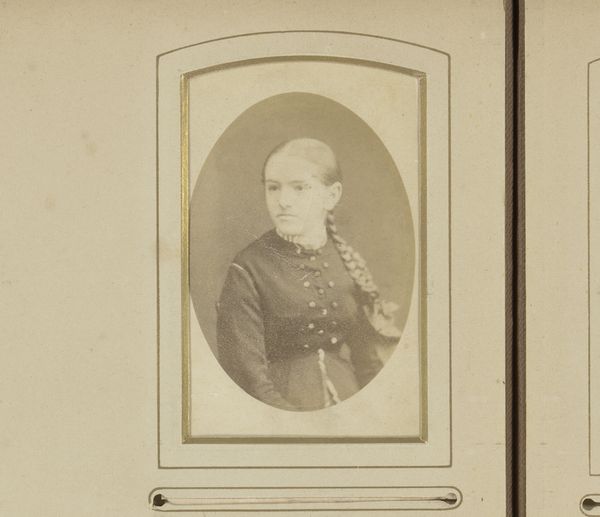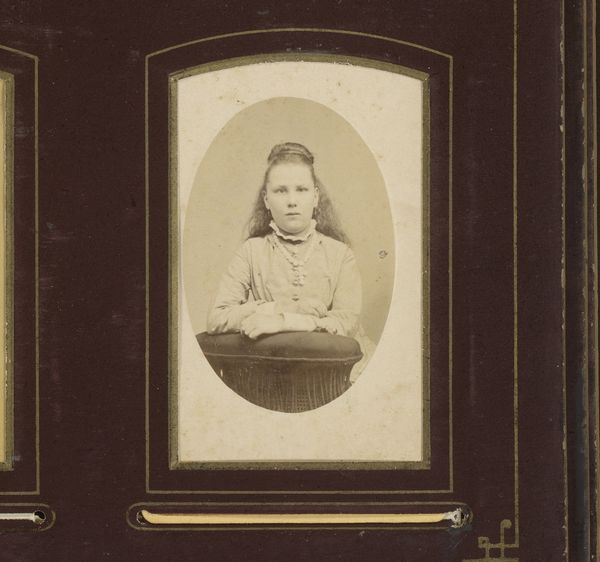
daguerreotype, photography
#
portrait
#
daguerreotype
#
photography
#
academic-art
#
framed
#
realism
Dimensions: height 95 mm, width 76 mm, height 73 mm, width 56 mm, height 126 mm, width 110 mm
Copyright: Rijks Museum: Open Domain
Curator: Philippe Guillaume Houdet’s “'Amedeon a 16 ans'” offers a fascinating window into mid-19th-century France through the lens of early photography. Created between 1855 and 1860, this work exemplifies the daguerreotype, a process that marked a significant technological shift in portraiture. What’s your immediate take? Editor: A brooding intelligence, wouldn't you say? Look at the weight of the book in his hand, balanced with what appears to be a cap – symbols of intellect and aspiration, carefully composed but delivered with such solemn gravity by someone so young. I bet his story would fill a novel. Curator: Exactly. Let's unpack some of the material components that shape our reading of his 'story.' The daguerreotype itself – a unique image on a silvered copper plate – signals not just wealth, but also the evolving social dynamics around visibility. Its detailed surface, reflecting light in almost jewel-like ways, provided access to realism previously unseen. Think of it – ordinary folks seeing themselves or their kin represented in such detail for the first time! Editor: It's magic, isn't it? A kind of séance trick that captures light and preserves it forever. His gaze really holds you. The tones are incredible—imagine the artist hand-tinting that black uniform... he looks so buttoned-up! I wonder about the social conventions pressing down on him; and how limiting such a uniform was. I would have broken all the rules if they stuffed me into such attire. Curator: Those uniforms would certainly have varied based on class and school. Considering it was crafted between 1855 and 1860, what might this say about labor divisions, and the relationship between materials like silver and glass, the labor of creating them, and that of Houdet himself? It reminds us that what now might be perceived as a charmingly quaint artifact was then cutting-edge—and not equally accessible across French society. Editor: Absolutely. The image ripples through time – whispering stories of fleeting youth and relentless societal changes. Looking closer I detect, and I like that it carries both a timelessness and an immediacy. Curator: Agreed. “Amedeon a 16 ans” is both artifact and aspiration. Examining photographic portraiture underscores how intertwined representation and the democratization of imaging really were during a crucial era. Editor: To consider photography as mere visual documentation seems absurd. Inhoudet really opened an evocative space for us. It gives pause and allows the eyes, mind, and soul to settle on possibilities of human existence.
Comments
No comments
Be the first to comment and join the conversation on the ultimate creative platform.

